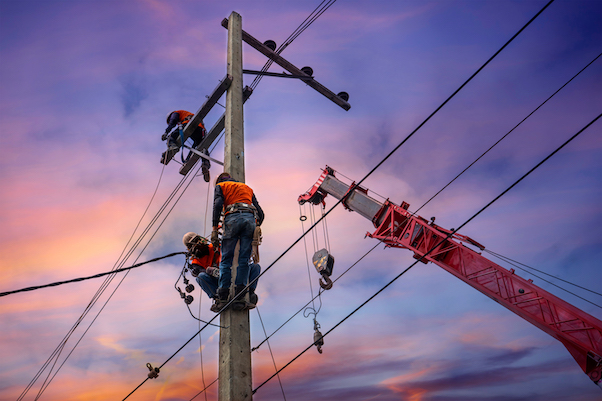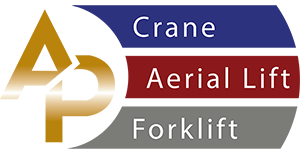Services
Aerial Lift TrainingForklift Operator Certification
Instructor Courses
Mobile Crane Operator Certification
Online Training
Crane Operator Training
Overhead Crane Training
Rigging and SignalPerson Training
All Purpose Crane Training offers crane operator training on-site or off-site. Providing National accredited crane operator certification meeting OSHA ANSI standards for crane operators to become certified.
1926.1401
1926.1402
1926.1403
1926.1404
1926.1405
1926.1406
1926.1407
1926.1408
1926.1409
1926.1410
1926.1411
1926.1412
1926.1413
1926.1414
1926.1415
1926.1416
1926.1417
1926.1418
1926.1419
1926.1420
1926.1421
1926.1422
1926.1423
1926.1424
1926.1425
1926.1426
1926.1427
1926.1428
1926.1429
1926.1430
1926.1431
1926.1432
1926.1433
1926.1434
1926.1435
1926.1436
1926.1437
1926.1438
1926.1439
1926.1440
1926.1441
1926.1442

- (a) Hazard assessments and precautions inside the work zone. Before beginning equipment operations, the employer must:
- (1) Identify the work zone by either:
- (i) Demarcating boundaries (such as with flags, or a device such as a range limit device or range control warning device) and prohibiting the operator from operating the equipment past those boundaries, or
- (ii)Defining the work zone as the area 360 degrees around the equipment, up to the equipment's maximum working radius.
- (2) Determine if any part of the equipment, load line or load (including rigging and lifting accessories), if operated up to the equipments maximum working radius in the work zone, could get closer than 20 feet to a power line. If so, the employer must meet the requirements in Option (1), Option (2), or Option (3) of this section, as follows:
- (i) Option (1) - Deenerglze and ground. Confirm from the utility owner/operator that the power line has been deenergized and visibly grounded at the worksite.
- (ii) Option (2) - 20 foot clearance. Ensure that no part of the equipment, load line, or load (including rigging and lifting accessories), gets closer than 20 feet to the power line by implementing the measures specified in paragraph (b) of this section.
- (iii) Option (3) - Table A clearance.
- (A) Determine the line's voltage and the minimum approach distance permitted under Table A (see 1926.1408).
- (B) Determine if any part of the equipment, load line or load (including rigging and lifting accessories), while operating up to the equipment's maximum working radius in the work zone, could get closer than the minimum approach distance of the power line permitted under Table A (see 1926.1408). If so, then the employer must follow the requirements in paragraph (b) of this section to ensure that no part of the equipment, load line, or load (including rigging and lifting accessories), gets closer to the line than the minimum approach distance.
- (b) Preventing encroachment/electrocution. Where encroachment precautions are required under Option (2) or Option (3) of this section, all of the following requirements must be met:
- (1) Conduct a planning meeting with the operator and the other workers who will be in the area of the equipment or load to review the location of the power line(s), and the steps that will be implemented to prevent encroachment/electrocution.
- (2) If tag lines are used, they must be nonconductive.
- (3) Erect and maintain an elevated warning line, barricade, or line of signs, in view of the operator, equipped with flags or similar high visibility markings, at 20 feet from the power line (if using Option (2) of this section) or at the minimum approach distance under Table A (see 1926.1408) (if using Option (3) of this section). If the operator is unable to see the elevated warning line, a dedicated spotter must be used as described in 1926.1408(b)(4)(ii) in addition to implementing one of the measures described in 1926.1408(b)(4)(i), (iii), (iv) and (v).
- (4) Implement at least one of the following measures:
- (i) A proximity alarm set to give the operator sufficient warning to prevent encroachment.
- (ii) A dedicated spotter who is in continuous contact with the operator. Where this measure is selected, the dedicated spotter must:
- (A) Be equipped with a visual aid to assist in identifying the minimum clearance distance. Examples of a visual aid include, but are not limited to: a clearly visible line painted on the ground; a clearly visible line of stanchions; a set of clearly visible line-of-sight landmarks (such as a fence post behind the dedicated spotter and a building corner ahead of the dedicated spotter).
- (B) Be positioned to effectively gauge the clearance distance.
- (C) Where necessary use equipment that enables the dedicated spotter to communicate directly with the operator.
- (D) Give timely information to the operator so that the required clearance distance can be maintained.
- (iii) A device that automatically warns the operator when to stop movement, such as a range control warning device. Such a device must be set to give the operator sufficient warning to pre vent encroachment.
- (iv) A device that automatically limits range of movement, set to prevent encroachment.
- (v) An insulating link/device, as defined in 1926.1401, installed at a point between the end of the load line (or below) and the load.
- (5) The requirements of paragraph (b)(4) of this section do not apply to work covered by subpart V of this part.
- (c) Voltage information.Where Option (3) of this section is used, the utility owner/operator of the power lines must provide the requested voltage information within two working days of the employer's request.
- (d) Operations below power lines.
- (1) No part of the equipment, load line, or load (including rigging and lifting accessories) is allowed below a power line unless the employer has confirmed that the utility owner/operator has deenergized and (at the worksite) visibly grounded the power line, except where one of the exceptions in paragraph (d)(2) of this section applies.
- (2) Exceptions. Paragraph (d)(1) of this section is inapplicable where the employer demonstrates that one of the following applies:
- (i) The work is covered by subpart V of this part.
- (ii) For equipment with non-extensible booms: The uppermost part of the equipment, with the boom at true vertical, would be more than 20 feet below the plane of the power line or more than the Table A of this section minimum clearance distance below the plane of the power line.
- (iii) For equipment with articulating or extensible booms: The uppermost part of the equipment, with the boom in the fully extended position, at true vertical, would be more than 20 feet below the plane of the power line or more than the Table A of this section minimum clearance distance below the plane of the power line.
- (iv) The employer demonstrates that compliance with paragraph (d)(1) of this section is infeasible and meets the requirements of 1926.1410.
- (e) Power lines presumed energized. The employer must assume that all power lines are energized unless the utility owner/operator confirms that the power line has been and continues to be deenergized and visibly grounded at the worksite.
- (f) When working near transmitter/communication towers where the equipment is close enough for an electrical charge to be induced in the equipment or materials being handled, the transmitter must be deenergized or the following precautions must be taken:
- (1) The equipment must be provided with an electrical ground.
- (2) If tag lines are used, they must be nonconductive.
- (g) Training.
- (1) The employer must train each operator and crew member assigned to work with the equipment on all of the following:
- (i) The procedures to be followed in the event of electrical contact with a power line. Such training must include:
- (A) Information regarding the danger of electrocution from the operator simultaneously touching the equipment and the ground.
- (B) The importance to the operator's safety of remaining inside the cab except where there is an imminent danger of fire, explosion, or other emergency that necessitates leaving the cab.
- (C) The safest means of evacuating from equipment that may be energized.
- (D) The danger of the potentially energized zone around the equipment (step potential).
- (E) The need for crews in the area to avoid approaching or touching the equipment and the load.
- (F) Safe clearance distance from power lines.
- (ii) Power lines are presumed to be energized unless the utility owner/operator confirms that the power line has been and continues to be deenergized and visibly grounded at the worksite.
- (iii) Power lines are presumed to be uninsulated unless the utility owner/operator or a registered engineer who is a qualified person with respect to electrical power transmission and distribution confirms that a line is insulated.
- (iv) The limitations of an insulating link/device, proximity alarm, and range control (and similar) device, if used.
- (v) The procedures to be followed to properly ground equipment and the limitations of grounding.
- (2) Employees working as dedicated spotters must be trained to enable them to effectively perform their task, including training on the applicable requirements of this section.
- (3) Training under this section must be administered in accordance with 1926.1430(g).
- (h) Devices originally designed by the manufacturer for use as: a safety device (see 1926.1415), operational aid, or a means to prevent power line contact or electrocution, when used to comply with this section, must meet the manufacturers procedures for use and conditions of use.
| Voltage (nominal, kV, Alternating current) |
Minimum clearance distance (feet) |
|---|---|
| Up to 50 | 10 |
| Over 50 to 200 | 15 |
| Over 200 to 350 | 20 |
| Over 350 to 500 | 25 |
| Over 500 to 750 | 35 |
| Over 750 to 1000 | 45 |
| Over 1000 | (as established by the utility owner/operator or registered professional engineer who is qualified person with respect to electrical power transmission and distribution) |
Note: The value that follows "to" is up to and includes that value. For example, over 50 to 200 means up to and including 200kV.
